
Fly fishing wins the heart of every angler during his lifetime fishing experience, but a few find it challenging. However, a successful day on water can only be achieved with some challenges. Tangled backing lines, multiple knot techniques, casting issues, and reel drag problems can frustrate you even if you gain much experience in fly fishing. But tens, not fishers, we are here to make your angling escapade more fun with our simple but scientific terms of fly fishing reel setup.
How to set a fly fishing
Most anglers do fly fishing to catch trout and salmon, but there is a good chance the fresh and saltwater will carry it. We use a braided line on it, and it has two types, wet or dry, but now I want to teach you a good start-to-end setup for fly fishing.
How to setup a fly rod
A fly rod selection is the first and primary thing you must consider. In a fly rod, you keep your mind clear about its length and weight, but the rod’s selection depends on the water type, whether still and clear or saltwater, the fish you will catch, your pocket volume, the fly size, and your personal choice. My concern is the 300-yard line capacity for saltwater and 150-yard line capacity for regular fly fishing for eight-weight rods. The rod action means how much flexibility it gives to your rod.
- The fast-action rod means when the rod flexes in the tip or top third of the rod and is favorable for windy weather, quick hookset, and powerful casts. (for catching more powerful fish, I suggest you choose this)
- The medium-action rod means when the rod flexes in the top half or two-thirds of the rod and is favorable for beginners and experienced anglers and a good compromise between power and feel.
- The slow-action rod is when it flexes along most of its length and is favorable for delicate presentations in close quarters. (The starters must choose this)
The rod’s weight must match your rod’s length, and of course, that feels comfortable when you hold it in your hands. I have a particular information in one table.
For Freshwater fly fishing:
Water Scenario | Rod’s length | Rod’s Weight | Target fish types |
Large impoundments | 9.5-10 feet | 7/8 weight | Bass, Pike, Carp |
Small Still Water | 9-9.5 feet | 5/6 weight | Trout, Panfish, Small Bass |
Large Rivers | 9-10 feet | 4/6 weight | Walleye, Smallmouth Bass |
Small Streams | 7-8.5 feet | 2/5 weight | Brook Trout, Brown Trout |
Small Rivers | 10 feet | 7/8 weight | Light Salmon, Sea Trout |
For Saltwater fly fishing:
Water Scenario | Rod’s length | Rod’s weight | Target Fish Types |
Shallow flats or muddy and sandy bottom | 9 feet | 7/9 weight | Bonefish, Redfish, Flounder |
Mangroves or warmer coastal flats | 9 feet | 9/10 weight | Permit, Baby Tarpon, Snook |
Bluewater or offshore | 9 feet | 11/13 weight | Giant Tarpon, Sailfish, King mackerel |
Subtropical water or Coastal areas | 8.5-9 feet | 12/14 weight | Shark, Tuna, Dorado |
- To make everything short, you should buy a medium-fast action rod of 7-9 feet for freshwater and 10-12 feet for covering heavy areas, and select a rod made of graphite because of its lightweight material and sensitivity.
- Most of my fellow anglers use 12-14-foot rods for European nymphing.
- There are two fly rods that I have been using for the last 15 years: the Redington Fly Rod (good because of its lifetime warranty and smooth cast) and the L.L Bean Streamlight rod ( because of their excellent customer care service).
Setup your fly Reel
The decision about the fly reel is crucial for the balance and overall performance of your fly fishing setup. The reel has many considerations, whether made of aluminum, composite, or machined bar stock aluminum. Still, as a fly fisher, I like the machined aluminum reel because it is more durable and wispy.
A fly reel with a big arbor and reel size helps retrieve the line more quickly and increases line spooling, which means more area coverage. The fly reels have two drag types: clicked and pawl, consisting of a gear system with a series of teeth attached to a wheel (clicker). When the reel gets tense, the pawl(teeth) click against the clicker, creating a click sound. This drag system, although simple and has nostalgic appeal, is only favorable in freshwater fishing, where the line is more important than drag. The other most liked drag system is disc drag, often made with carbon fiber and composite and is familiar because of its consistent resistance, handling fast-running fish, and being more advanced than click and pawl. I owned a Ross Colorado reel, but my friend has a Sage ESN reel. I used both of them and discovered that the Ross reel is more durable because of its machined structure, but my friend won the game of telling me the best Sage reel because of its lower price than my Ross reel.
You must look at the anodizing finish feature of a fly reel; that means how much your reel will bear dings, fights, and corrosion resistance. Moreover, it is type II or III (denotes hardness of coated material), but I like type II because I dyed it in many colors, while type III is complex to change color. You should be clear about your hand’s position because left-hand retrieve means you make a cast with your right hand and reel with your left hand, while right-hand retrieve means you cast with your left hand and reel with your right hand.
Warning: The fly line resists touching the reel’s body; otherwise, the continuous rubbing of the line and swirl creates more heat, causing the line to weaken. Moreover, it establishes casting efficiency and builds knots on the line.
Line Backing
The importance of a backing line cannot be overstated because it gives more line capacity to chase a long-run fish, balances the weight of a reel efficiently, and saves you cost because the main fly line is much exorbitant. There are many courses of action regarding backing line materials like Dacron, Braided Polyethylene, and Gel-Spun Polyethylene, so choose Dacron if you want more manageability and braided line if strength matters to you. Consider that your line gets attached to the reel with an Albright or Arbor knot, and you can put some tape on it to hold it firmly. What quantity of linebacking would be enough? 100-200 yards (20-30lb) is sufficient.
Backing line (yards) | Reel weight |
50-100 | 1-3 |
100-150 | 4-5 |
150-200 | 6-7 |
200-250 | 8-9 |
250-300 | 10-12 |
Note: These backing line numbers may vary due to spool size, fishing conditions, and specific fly lines used.
Tip: For the backing line, you ensure that the Diameter of the line is thinner, the color must be evident on the water, and the backing line must be equal to or exceed the weight of a fly line. For instance, for a 7-weight fly, the linebacking must be 20 pounds.
Fly line attachment
A fly line is a particular type of line made for fly rods and reels, and unlike a traditional braided line, it is much thicker and heavier. The fly lines are characterized based on their weight, starting from 1 and going up to 14 maximum. The line weight must be equal to the rod weight, like the 5-weight fly line for a 5-weight fly rod, but if you get one size higher line than the rod’s weight, it is said to be over-lining and helpful to enhance roll casting and cast heavier flies. One other point to be cleared is that the ly line must come off the bottom part to put more drag on the fish and lessen his chances of escape.
The fly lines have a loop or welded connection at one end to connect it with the backing line and a pre-made loop at the other to attach the leader. Use the surgeon knot (it reduces the chances of loosening and gives more binding) and the Albright knot (best for connecting different line diameters) to make a stronghold between the backing and main lines.
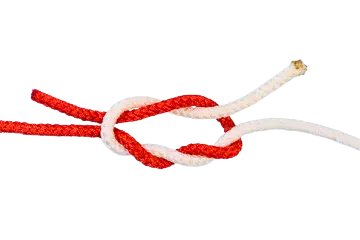
Surgeon knot
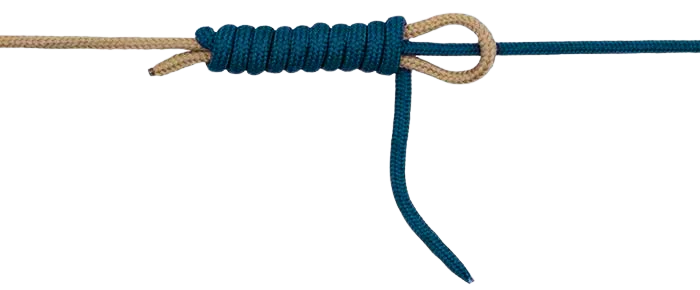
Albright knot
There are many types of fly lines with alternative characteristics:
- Floating fly line: As the name denotes, a fly line that floats on the water during casting. It is mainly used for dry fly fishing, where you aim to present the fly on or just below the water’s surface. These floating lines are handy for dry fishing and win the game in nymphing and indicator fishing. Its high visibility makes us aware to track the line when hunting a fish that comes to feed at a water’s top. One negative point is that it is not for fast currents, especially when you try to get a drag-free drift.
- Sinking fly line: A fly line that drops in the deep waters to trigger fish of a depth. It is constructed with a density-compensated core and various coatings, and the core is of braided or monofilament type. The sinking fly lines come in multiple sink rates: slow, intermediate, fast, and extra-fast sinking measured in inches-per-second. My most straightforward way is to use 6-7 IPS with a Rio Outbound Short Shooting head to get the fish in 10 feet depth. Its color indicates the sinking types (Variation may occur due to brand labelings)
- Type 1 (Slow Sink): Often Tan or Light Green
- Type 2 (Medium Sink): Light Green or Dark Green
- Type 3 (Fast Sink): Brown or Dark Brown
- Type 4 (Very Fast Sink): Dark Blue or Black
- Type 5 (Extra Fast Sink): Dark Blue or Black
- Type 6 (Super Fast Sink): Dark Blue or Black
The sinking fly lines are suitable for catching Trout, Bass, Pike, Redfish, Snook, and tarpon, but the sad point is this line gets snagged very soon in the rocky and weedy environment.
- Intermediate fly line: A fly line that sinks but is not too deep (1-2IPS) is a middle fly line to fish at a controlled depth like rivers, estuaries, and still waters. The difference between sinking and intermediate fly lines is that the sinking fly line sinks much more profoundly and faster than intermediate fly lines and performs well in windy conditions that intermediate lines lack.
- Sink-tip fly line: This is the tip section of 10-30 feet sinks while the remaining part floats on the water. Trout, Bass, Steelhead, and streamers for predatory fish can be prey with this fly line. The most significant point of favor I like in this line is that I can use unweighted flies and keep them in the strike zone, and it is super bouncy, so easy to cast.
- Weight-Forward (WF) and Double-Taper(DT) fly line: A fly line that has a heavier head near the tip section while the remaining running line is thin is WF, and this could be constructive for covering long distances and have more power to carry heavy leader but not provide the delicate presentation. While the double-taper line means a line with both ends having a tapered profile. The feature of its reversibility is that when one end of the line gets worn, you can use the other for a more delicate presentation. 85% of anglers recommend using this instead of the WF line. I received the SA Mastery Double-Taper fly line as a gift from my friend and found it effective for creeks and smaller streams to chase trout in close quarters.
leader to fly line
In fly fishing, the leader is the critical element in transferring energy from the fly line to the fly and presenting the fly naturally to the fish. It has two basic types: tapered or level leaders. The more used leader is tapered, which means a leader with a thick side on the fly line but a thin side linked with a tippet or fly. The other one is level leaders, which I forbid you if you are not an experienced angler because they have good casting accuracy and less shock absorbent, leading to tippet breakage during a fight with a fish. It comes in monofilament and fluorocarbon, and I like a mono leader because of its stretch, price, buoyancy, and fluro leader for its dense and abrasion resistance. My Simple formula is to go with fluro leader for nymphing, subsurface fishing, and situations where low visibility is crucial. In contrast, mono leader for dry fly fishing and where you want to keep a look on the leader.
I usually connect the fly line with a leader with a nail knot (a solid knot to secure lines of two Diameters strongly) or blood knot (perfect for joining lines of equal Diameters, but the fly line to leader is possible with it). If the fly leader already has loops at the end, connect the leader to the fly line with a handshake knot, and if it does not have a pre-built knot, use a nail knot.
How to tie nail knot:
How to tie blood knot?
The leader’s length and size depend on the type of fish and area you are covering, but my general perceptions are:
Fishing scenarios | Leader’s length | Leader’s size x |
Small streams | 7.5-9 feet | 4x to 6x |
Medium to large rivers | 9-12 feet | 3x to 5x |
lakes | 9-15 feet | 3x to 6x |
Saltwater (flats) | 9-12 feet | 8x to 12x(tippet) |
Note: the x represents the Diameter of the leader. The leader becomes thinner as the x decreases (3x to 5x).
- My likeness is to use a 9 feet 5x or 6x nylon tapered leader for average-size trout.
- One bonus point is to use a strike indicator above the connection point where the leader is attached to the fly line. To know my choice, I have two. I like Thingamabobber because it works excellently during high wind, and The New Zealand strike indicator because of its price and ease of changing depths. (Position the strike indicator higher on the leader in deep water fishing and close to the fly in shallow water fishing.
Tippet, a connecting line
A tippet is the thinnest section of the fly fishing that connects to the fly, and it also comes in mono or fluro material, but the suggested one is monofilament. It has a direct impact on how the fly behaves in the water. A fine tippet allows for a more delicate presentation, while a thicker tippet can provide more control over larger or heavier flies.
Attach your tippet with the leader by applying the Barrel knot( known for strength, smooth profile, and no tool needed for its tying) and Double uni knot (more effective in both fresh or saltwater fishing, for light lines, and ease to tie).
(barrel knot)
Tippet Size (X) | Targeted Fish Species | Approximate Diameter (inches) | Additional Information |
0X | Large Saltwater Species | 0.011 | Heavy leaders for big game fishing |
1X | Salmon, Steelhead | 0.010 | Suitable for larger flies and strong fighting fish |
2X | Large Trout, Bass, Pike | 0.009 | Versatile for a variety of freshwater and saltwater |
3X | Trout, Bass, Panfish | 0.008 | All-around size for general freshwater applications |
4X | Average-sized Trout, Panfish | 0.007 | Standard choice for nymphs, dry flies, and streamers |
5X | Small to Medium Trout, Panfish | 0.006 | Versatile for various fly sizes and fishing conditions |
6X | Small Trout, Panfish, Dry Flies | 0.005 | It is ideal for delicate presentations with small flies |
7X | Very Small Trout, Delicate Presentations | 0.004 | Fine tippet for challenging situations with small flies |
My point of view is for optimal turnover; you probably want about 18″ of a tippet that corresponds to your fly size. In general, streamers and really heavy nymphs get 0X to 3X, depending on size and water clarity, #10-12 flies get 4X, #12-16 get 5X, #16-20 get 6X, #18 and below get 7X.
Fly to Tippet
Flies refers to an artificial lure or imitation of a natural insect to attract a fish to bite. These imitations are made from features, fur, and synthetic materials. I use 16-20 dry flies for trout.
Flies | Purpose | Examples |
Dry flies | Float on the water to imitate adult insects. | Adams, Elk hair Caddis. |
Nymphs | Imitate aquatic insects that live underwater. | Pheasant Tail Nymph, Prince Nymph. |
Streamers | To mimic small fish. | Wooly Bugger, Clouser Minnow, and Zonker. |
Wet Flies | Designed to fish below the water's surface. | Soft Hackle wet flies, Wet Stonefly. |
Emergers | Catch insects that emerge on the water's surface. | RS2, CDC Biot Emerger, Barr’s Emerger. |
Terrestrials | To catch land-dwelling insects like ants, beetles, and grasshoppers. | Ant pattern, Chernobyl Ant. |
Saltwater flies | Used to attract baitfish or crustaceans. | Lefty’s Deceiver, Bonefish Gotcha. |
Midge pattern | Imitate small insects of freshwater. | Griffith’s Gnat, Zebra Midge. |
Dry-Dropper combos | Combine a dry fly with a nymph to cover many insects. | Parachute Adams with Pheasant Tail Nymph dropper. |
Mouse Pattern | Used to target sizeable predatory fish. | Morrish Mouse, Mr. Hanky. |
Tip: When your fish see the food and regret your offerings, it’s time to change the fly. If you are doing nymph fishing, turn to bead flies and dry flies and also connect colorful flies with your tippet and change your retrieval speed pattern to induce that fish.
How do you set up a fly rod and reel? step-by-step guide
The step needs all the components appropriately assembled; the line spooled up correctly, and the leader and flies connected securely.
Step1: Material needed
- A fly rod
- A fly fishing reel
- Backing line
- Fly line
- A fly leader
- A tippet
- Flies
- Nippers or scissors
- Knot tying tools
- Tackle bag
Step 2: Assembling of a fly rod
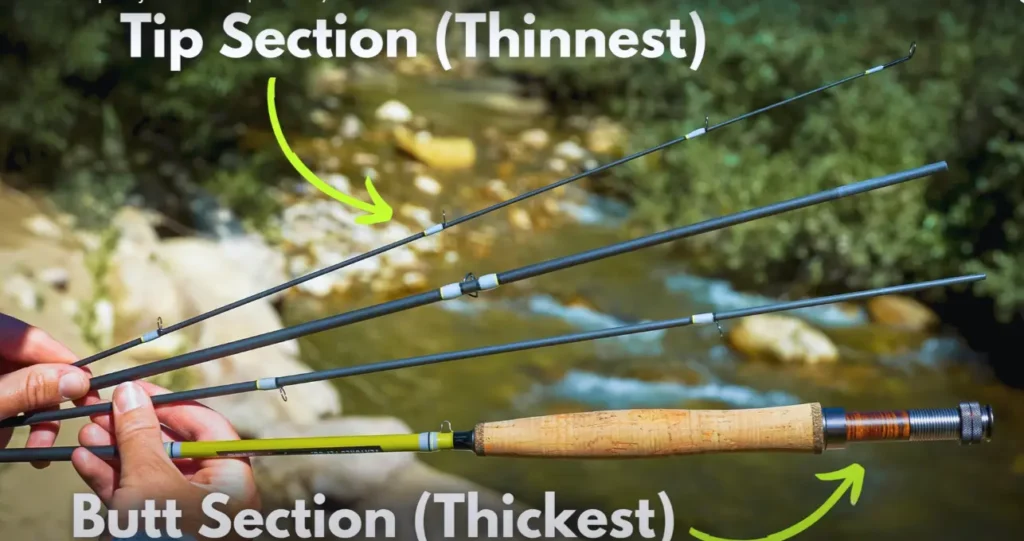
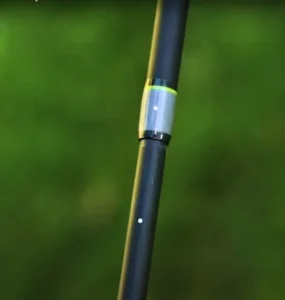
Lay out the rod on a clean surface and fit the smaller and thinner sections into larger, thick adjacent sections; hold each section close to the ferrule ( the connection point) and push the areas together. Once the ferrules are set, twist it to tighten but not hardy-tight it.
Step 3: Locate the reel
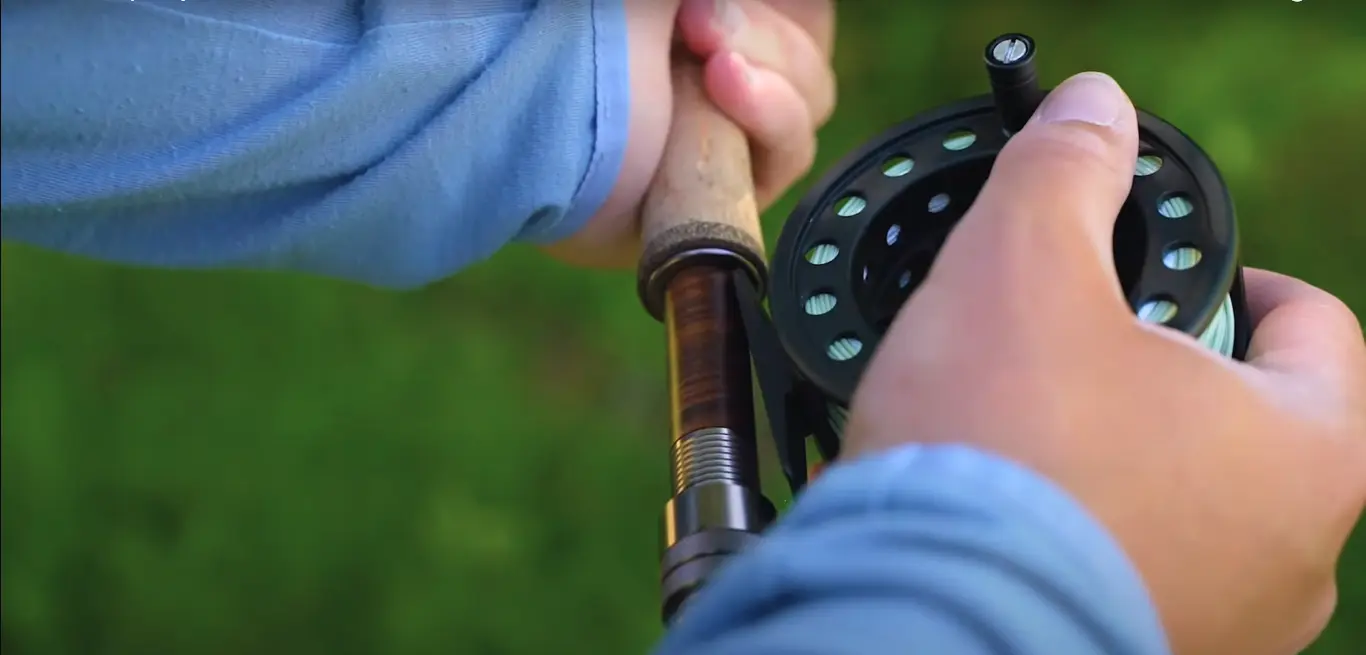
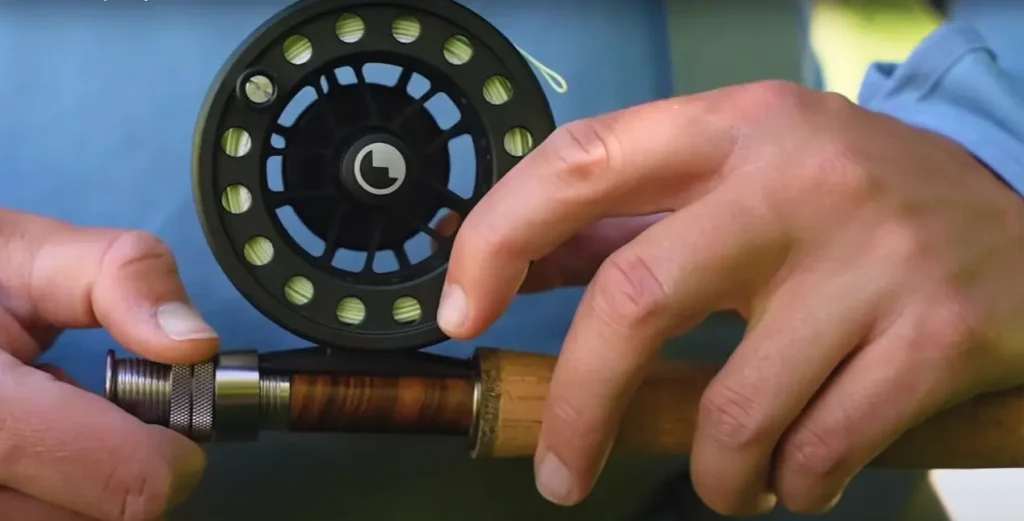
The fly reel is located near the bottom of the fly rod. The bottom of the fly reel has a foot that fits into the reel’s seat. Hold the fly rod horizontally, align the reel foot with a reel seat, and check it snugly. If your reel has a screw mechanism, turn the screw clockwise to tighten it, and if your reel is a lever-type, flip the lever into the locked position and make adjustments if necessary.
Step 4: Attach backing
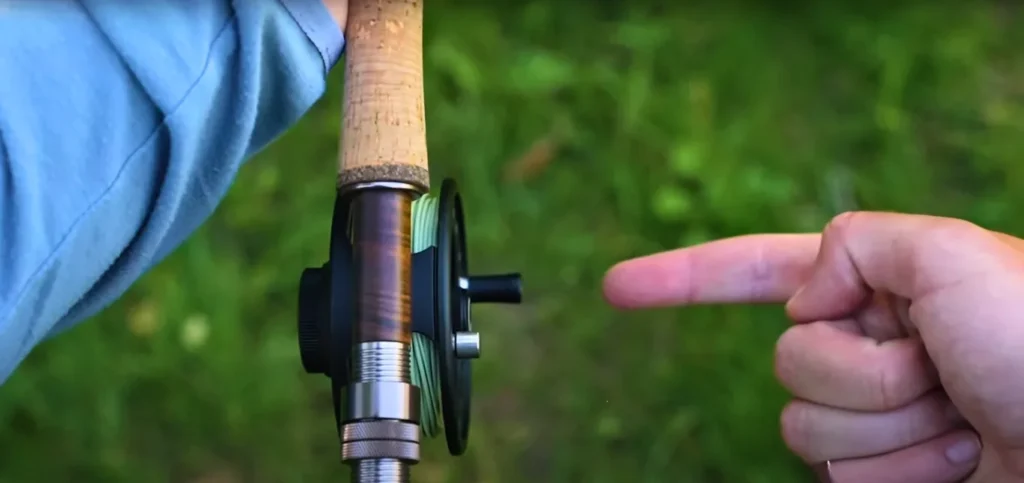
Thread the backing through the last or middle guide by making it a loop and get it stiff to the reel’s spool by tying an arbor knot and ensuring the backing spooled up evenly. Take help from your brother or friend, or hold the line between the pencil and hold it in a carton in a good position.
Step 5: Connect the fly line to the backing line
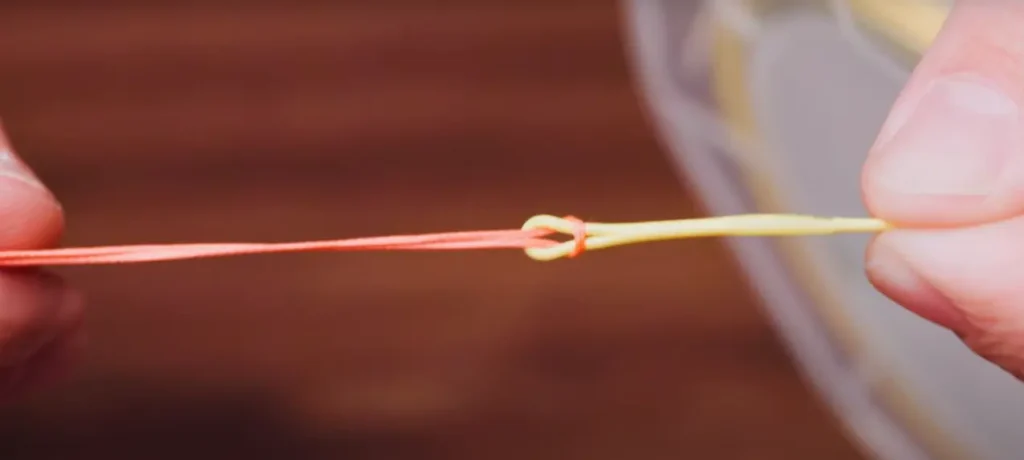
Use a double surgeon or an Albright knot to connect both lines and trim the excess tags. Thread the fly line through the guides and use the same spooling method as in-line backing. Sometimes, while retrieving a fly line, it has many twists that can be managed to make occasional false casts to let the line untwist in the air; you can also strip the line with your hand before reeling back the string.
Step 6: Connect the leader and tippet to the main line
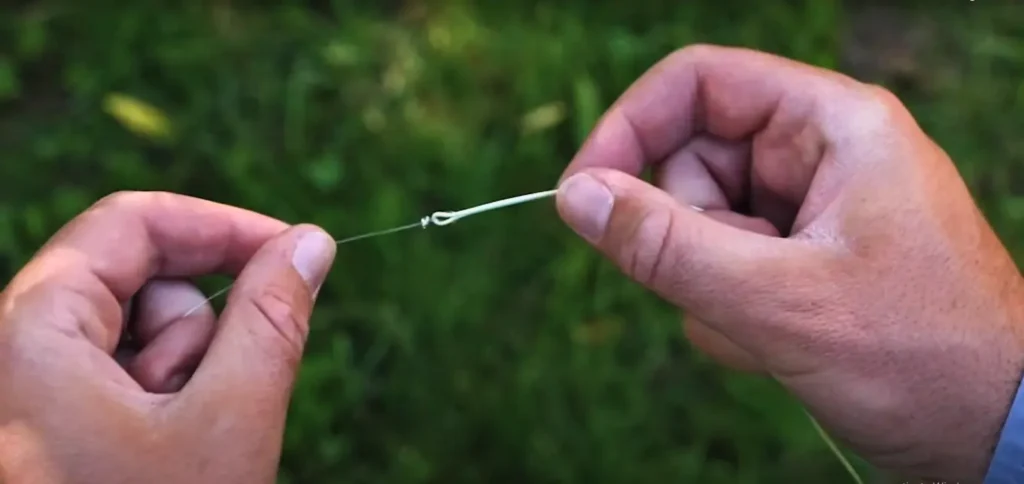
The leader may give you difficulty because it is pre-wrapped in a circular form and has folded loops. The solution is to take a tapered leader and hold it between your three middle fingers and, uncoil the leader gently, then stretch the leader to remove all the kinks and coils from it and join the leader with the fly line and wet the knot with water or saliva before tightening to reduce friction or heat. If you want to add more casting distance, add a tippet with blood or a surgeon knot.
Step 7: Add flies
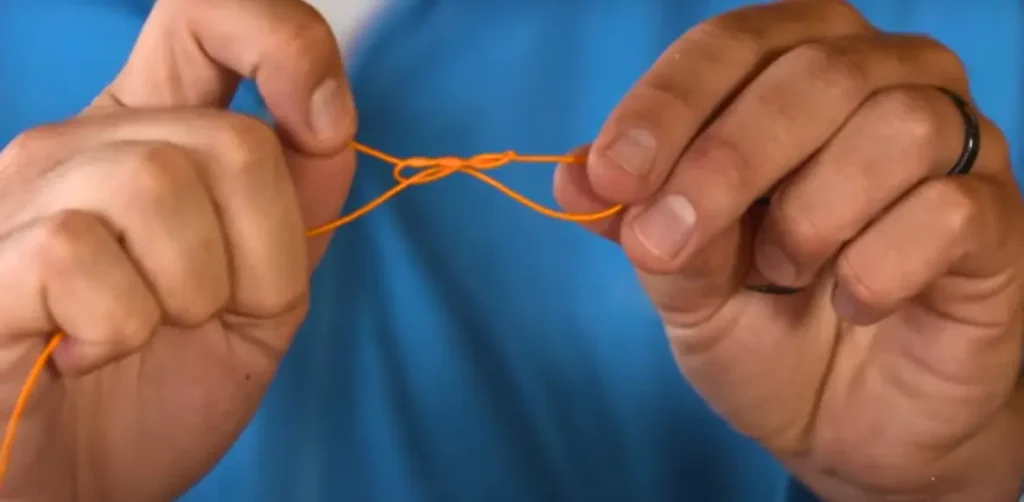
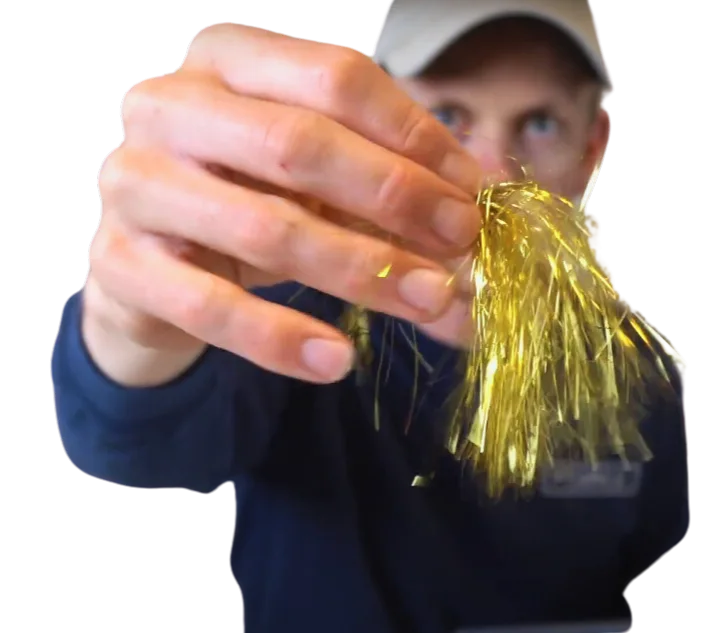
Select the fly by considering the water’s clarity, the insect’s activity, and the behavior of the fish. Hold the fly by the bend of the hook, preventing accidental injury. Thread the tippet through the eyes of the fly hook, tie an Orvis or improved clinch knot, trim the extended tippet, and start doing fly fishing with confidence.
Ending statement
Fly fishing is a rigid and relaxed fishing type as well. You can set up your reel and rod using the prescriptive method above and the guidelines to conquer the water game. Good luck beginners.
